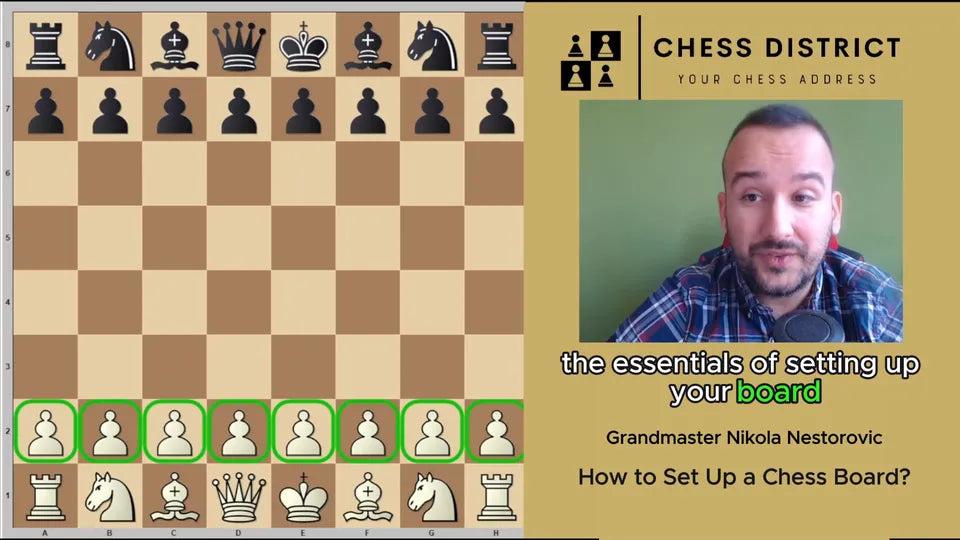How to Set Up a Chessboard: Step-by-Step Guide

Chess is a classic game that requires precision and strategy, and correctly setting up the chessboard is a crucial step towards starting the game. In this guide, we will walk through the steps to successfully set up the chessboard and prepare for play.

What You Need to Set Up the Chessboard:
Acquiring the Necessary Components
Before you begin setting up the chessboard, ensure you have all the necessary components: a chessboard with 64 squares in contrasting colors, 32 pieces (16 white and 16 black), and a rulebook with the game's rules.
Preparing the Playing Area
Choose a quiet and well-lit space for playing to focus on the game. Clear the table of unnecessary items and set up the board comfortably for playing.
Placing Chess Pieces on the Board
Step 1: Lay out the board with the light square in the bottom-right corner.

Step 2: Set up the pawns on the second ranks (or rows).

Step 3: Put your rooks in the corners.

Step 4: Place your knights next to your rooks.

Step 5: Bishops go next to knights.

Step 6: Your queen goes on her own color.

Step 7: Place your king on the last square.

Step 8: Don’t forget, White moves first.

Arrangement of Pieces in the Starting Position
Before you begin placing pieces on the chessboard, remember that the white player always sets up their pieces on the bottom rank of squares. The order of pieces on the board should be as follows (from left to right): rook, knight, bishop, queen, king, bishop, knight, rook.
How to Properly Arrange White and Black Pieces
After placing the white pieces, on the second rank of squares, arrange the black pieces. The king and queen should be placed on squares of the same color.
Tips for Successfully Setting Up the Chessboard
Rules of Setting Up the Chessboard
Properly setting up the chessboard and pieces is crucial to avoid misunderstandings during the game. Pay attention to correctly arranging the pieces to ensure smooth gameplay.
Maintaining Cleanliness and Neatness of the Board
After finishing setting up the chessboard, regularly maintain its cleanliness and neatness. Remove dust and other impurities to keep all pieces and squares clearly visible.
Rules of Opening the Game
After successfully setting up the chessboard, it's time to begin the game. Follow the rules of opening the game and consider a strategy to surprise your opponent.
Practical Tips for Beginners
If you're a beginner in chess, follow the advice of older and more experienced players. Learn from your mistakes and gradually develop your skills in the game.
After successfully setting up the chessboard and preparing for the game, you're ready for an exciting competition. Remember that chess is a game of strategy and imagination, so enjoy the mental challenge that this classic game offers.
Strategy of Placing Pieces for Tactical Advantage
Placing pieces on the board can be a tactical move that can secure an advantage in the early stages of the game. Consider placing pieces in line with plans for future moves and develop a strategy during the game.
How to Place Pieces on the Board with Style and Precision
Placing pieces on the board can be an artistic challenge that requires precision and aesthetics. Place pieces carefully with attention to detail and a sense of balance and symmetry on the board.
How to Use Setting Up the Board as Part of Mental Preparation
The process of setting up pieces can be an opportunity for mental preparation for the game. Use the time of setting up to focus your thoughts, visualize your moves, and develop a strategy for the upcoming game.
The Importance of Rituals and Concentration During Game Setup
Creating rituals around setting up the chessboard can help you focus and stay present throughout the entire game. Maintaining concentration and attention to detail during setup can prepare you for the challenges ahead.
So, you know what to do. Start learning chess now!


Leave a comment